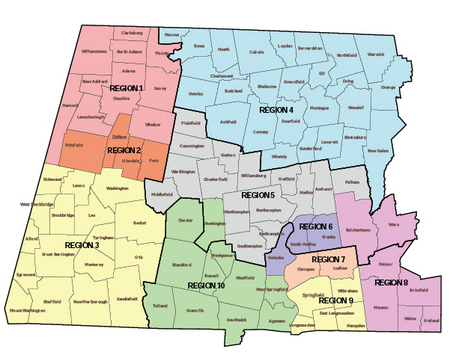By Bill Peters
Local Buzz
September 8, 2009
http://www.masslive.com/localbuzz/index.ssf/2009/09/how_many_priests_does_it_take.html
A brief look at the Springfield Catholic Church's farm system
The Springfield Diocese announced last month that more churches will close — the second substantial contraction in the local Catholic Church in roughly three years. Congregations, understandably, are upset about this, as the Valley's religious landscape in cities like Northampton and Chicopee will look a lot different in 2010.
Probably, the Springfield Diocese will absorb some or most of the blame for these changes. But a report issued on August 25th by the Diocese's Pastoral Planning Department provides an interesting administrative look at the Church's troubles.
 |
Perhaps it's because I went to a Jesuit high school and then blocked out all memory of it, but I always kind-of love to be reminded that the Catholic Church is as much a business as anything else — that a spiritual institution can also be bureaucratic and mechanical has always intrigued me. While the recent round of church closures might come down to old buildings or politics or miscommunication (as they always do), they also come down to a shortage of priests.
Some background for the secular population: according to the report linked before the jump, between 1980 and 2004, the Diocese had attempted three times, unsuccessfully, to create a pastoral planning department which could monitor Western Mass's priest-to-church-building ratio and close churches and merge parishes accordingly. But they were unable to complete their efforts before a new bishop was appointed in Springfield.
During those 24 years, Pastoral Planning director John Bonzagni told me the Diocese had only an approximate sense that the Diocese had too many church buildings for a declining Catholic population. When the department was created by Springfield Diocese Bishop Timothy McDonnell in 2004, the Diocese solicited the aid the UMass-Amherst Center for Economic Development to analyze Western Mass's parishes. The study, in turn, made recommendations for consolidating the area's religious landscape to accommodate a shrinking number of priests who could actually make it to a church.
Headed by Professor John Mullin, that report, which became known as the the Mullin Report, was released in February, 2007. Bonzagni estimated, loosely, that the Pastoral Planning department accepted only about a third of the report's recommendations, but said that, undoubtedly, some of the shuttered churches would have been closed earlier had a department been in place.
"We probably cut to the bone a little more than we would have 10 years ago," Bonzagni said.
In 2004, according to Diocese research, 90 diocesan priests served 126 parishes across Western Mass. That research projects that by next year, that number could be reduced to 71 priests, 68 in 2011, 63 in 2012. Largely, this projection is based on age.
"A priest may retire at 70 years of age, and is generally expected to retire at 75," the report states. "Our planning had to assume the worst case scenario and so we assume that a priest will retire as soon as he turns 70. This approach does not account for a sudden debilitating illness or unexpected injury or pre-mature death."
The Diocese would need around 100 priests in order to serve the community without overextension. There are currently 28 men studying for the priesthood for the Springfield Diocese, who are at different points of progress through their study. That number — 28 — is higher than in previous years, Bonzagni said. But the report warns that, in a worst-case scenario, there may be no new ordained priests ready to serve the community before 2012.
What's more, studying for priesthood can take longer now than it once did. While that's often for the best, Bonzagni said that, given the priest shortage, the Church has no "back bench" whose talents they can spend time nurturing more fully.
"Our training of priests has been shortened," Bonzagni said. "25 years ago, maybe 30, a guy would have had two or three assignments before he became a pastor. [...] Well now, guys are getting out of the seminary after three-to-five years and they have a pastorate after only one posting."
Meanwhile, oddly enough, a post-college career website profiles work in the priesthood as such: "The shortage of Roman Catholic priests is expected to continue, resulting in a very favorable job outlook through the year 2012."
Any original material on these pages is copyright © BishopAccountability.org 2004. Reproduce freely with attribution.